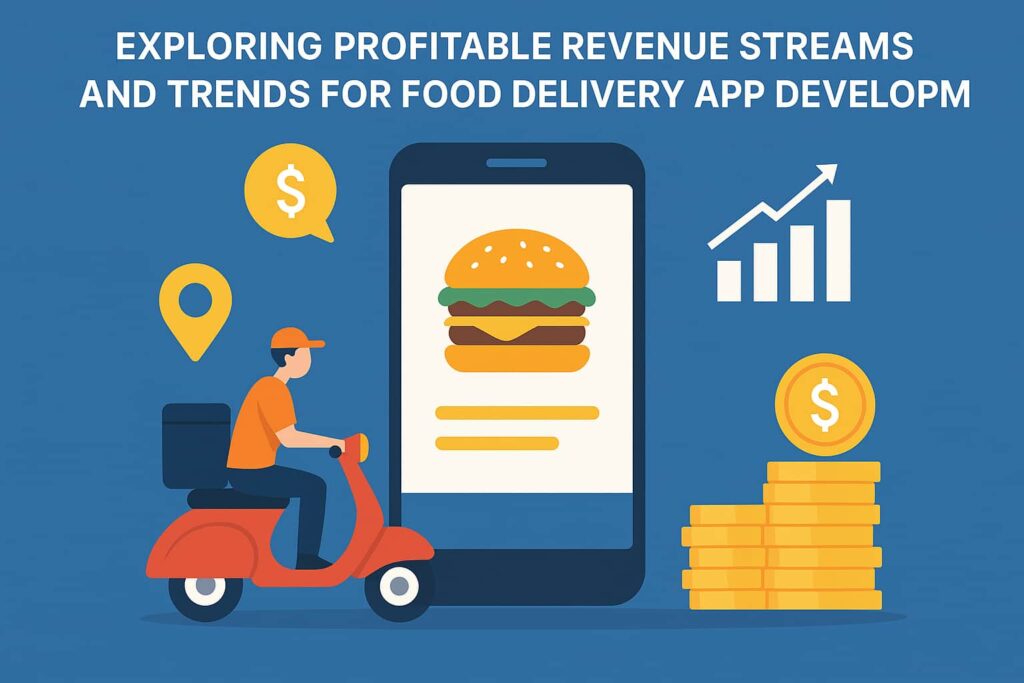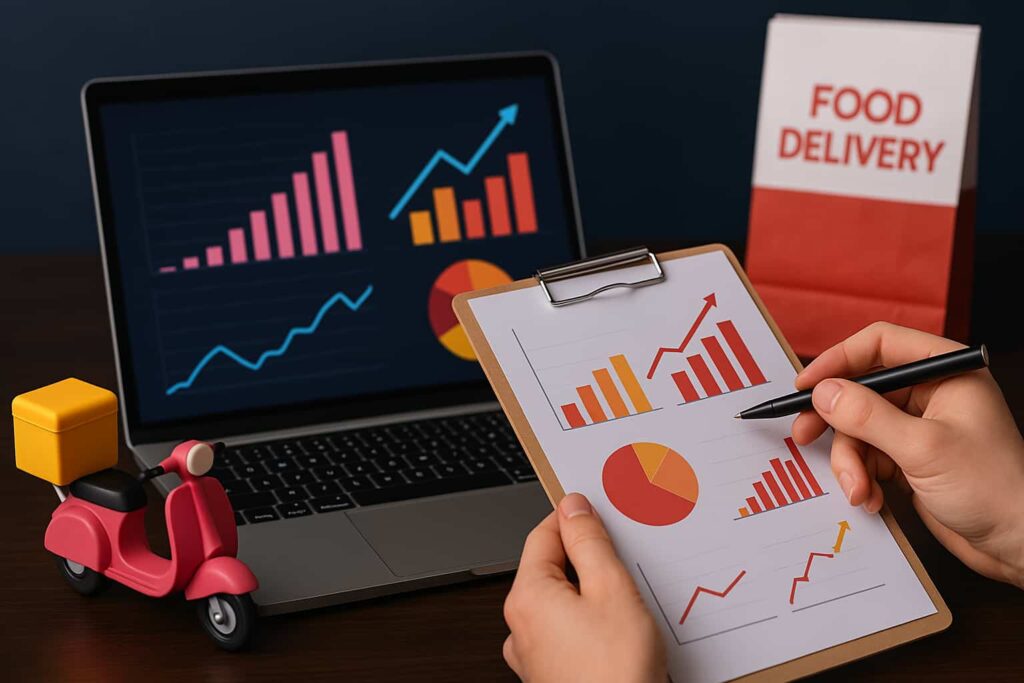The booming expansion of online food app success shows the massive demand for convenient online food ordering. As the space rapidly expands, many entrepreneurs and startups aim to develop competing platforms. However, building a successful venture in this arena requires extensive planning and significant capital investment upfront.

Before embarking on such an ambitious undertaking, it is prudent to thoroughly research how it benefits your business and its latest trends. This insight will help businesses earn profits through multiple channels by creating apps that consider the latest trends in the food industry. Thus, let us discuss these points in detail in this article without further due.
Promising Revenue Channels for Food Delivery App Development
Peak Timing Charges
Multiple firms utilize this technique as their revenue model to earn more profits at this time of day. This method involves temporary peak pricing for every item during high demand to earn extra profits. For example, the software can charge extra money under the minimum order limits or more for delivery beyond the fixed radius.
Commission-Based Model
The most promising approach is a commission-based model. In this method, the business partners with dining places and takes a commission from the total number of orders. Typically, this fee is 15-30% of the order total. With enough order volume and restaurant partners, the commissions add up. Hypertargeted and performance-based mobile ads can be highly beneficial. Partnerships with other services, like grocery stores, also present cross-promotion opportunities.
Subscription-Based Model
It’s the revenue pricing model where customers pay recurring monthly or yearly fees to keep using or accessing the service or online software products. This provides the business with assured profits and can help predict possible revenue. Further, different types of subscription models can give users choices so they can pick their preferred one.
Advertising and Partnerships
Online meal solutions can earn money by advertising other brands on their platform and charging them to display ads. Furthermore, partnering with related industries can create new earning potential for online service booking. This can help the company attract customers and create a new revenue channel.
Service Charges
In this method, the enterprise collects user fees for the delivery service it offers by adding platform charges and service provider fees at checkout. Most businesses utilize these fees as part of their business strategies. This generates constant income for the business, helps it grow long-term, and further improves the software’s functionality.
These charges taken by the platform’s users help pay the app providers and the expenses required to manage the platform. The company takes a fixed percentage from each order. This amount varies and is determined by the distance between the restaurant and the user’s location.
Delivery Charges
In this method, the enterprise charges users for each order they place by adding delivery charges at checkout. As per the admin set, every region and locality can have different charges. These costs directly affect customer behavior and influence the order numbers and overall experience of customers.
Trends To Watch Out for In the Food Delivery Industry
The Unstoppable Rise Of Food Delivery Apps

The use of apps is increasing constantly among businesses and users globally. Food delivery backpacks are the most common sight in urban cities. It provides high profits for the firms and super convenience for the users. Thus, multiple firms are reaching out to a great food ordering app development company to receive high-end software that helps increase their customer base and retain them to earn steady profits.
Voice Ordering
Voice ordering is the technology that allows buyers to place orders using voice commands and devices like smartphones, tablets, or smart speakers. This trend is also called voice shopping or ordering. It can be used in various settings, including restaurants, online ordering, and shopping. In online voice ordering, the waiting time gets reduced, improving accuracy and offering a more personalized experience. Statistics show that many customers have already tried it and loved this technology.
Ghost Kitchen
Some restaurant owners have concluded that brick-and-mortar dining services are no longer compulsory, and they can gain more profits through Ghost Kitchen. It even reduces the hassle of managing dining with customers at the restaurant. The concept of a ghost kitchen is also known as the cloud kitchen.
It is a commercial kitchen that only prepares food for takeout, deliveries, and other purposes. It utilizes data from meal delivery apps to optimize menus and pricing for different items. This can help reduce food waste and even minimize the cost of food preparation. The kitchen often partners with meal-ordering apps and even has its own staff.
Delivery Subscriptions
A subscription-based delivery model allows users to subscribe to a plan with a one-time payment system, which can be monthly or yearly. This model differs from the traditional one, in which users have to pay every single time.
In return, they can receive exciting offers like free deliveries, discounts, and other perks. This model can be convenient for customers as they don’t have to worry about carrying cash, dealing with change, or waiting in line. This way, they can save time and money.
Read also:- Why You Need A VPN And Why You Don’t
Adoption Of Blockchain Technology For Enhanced Security
Blockchain technology has the potential to enhance the security of the platform due to its unique attributes, such as transparency, a decentralized and immutable database, and smart contract mechanisms. Blockchain can make the food delivery platform more transparent at all levels by storing information immutably and facilitating quick tracking in the supply chain.
Integration of IoT Devices
Integrating IoT devices into mobile phone software is a trend that can change the future of technology and user experience. IoT devices are connected to the internet and have sensors. This seamless interaction between apps and devices can lead to innovations, enhanced experiences, and a more convenient life.
Conclusion
Food delivery app development has various interesting monetization models through which the business can grow faster and have a huge user base. Plus, these latest trends can help you create an app that is more likely to impress users and retain them in your app.